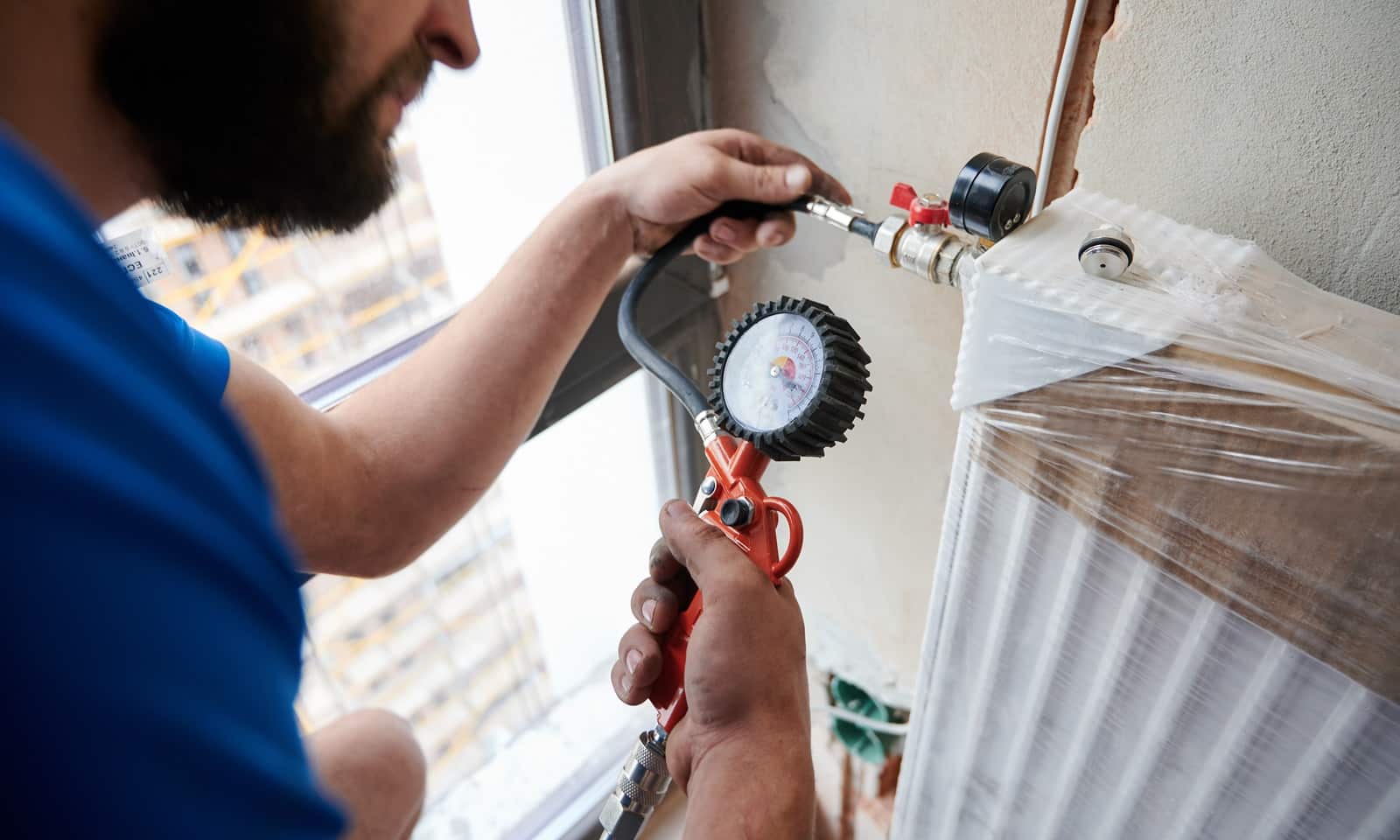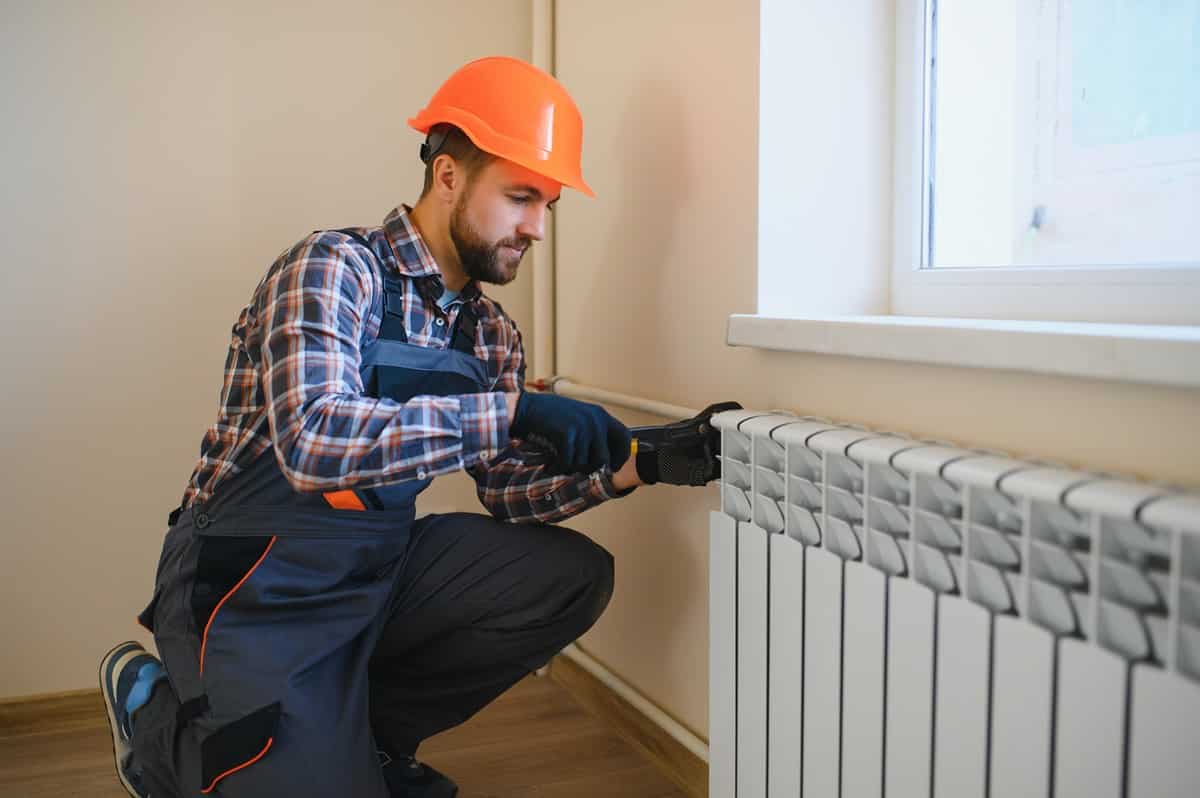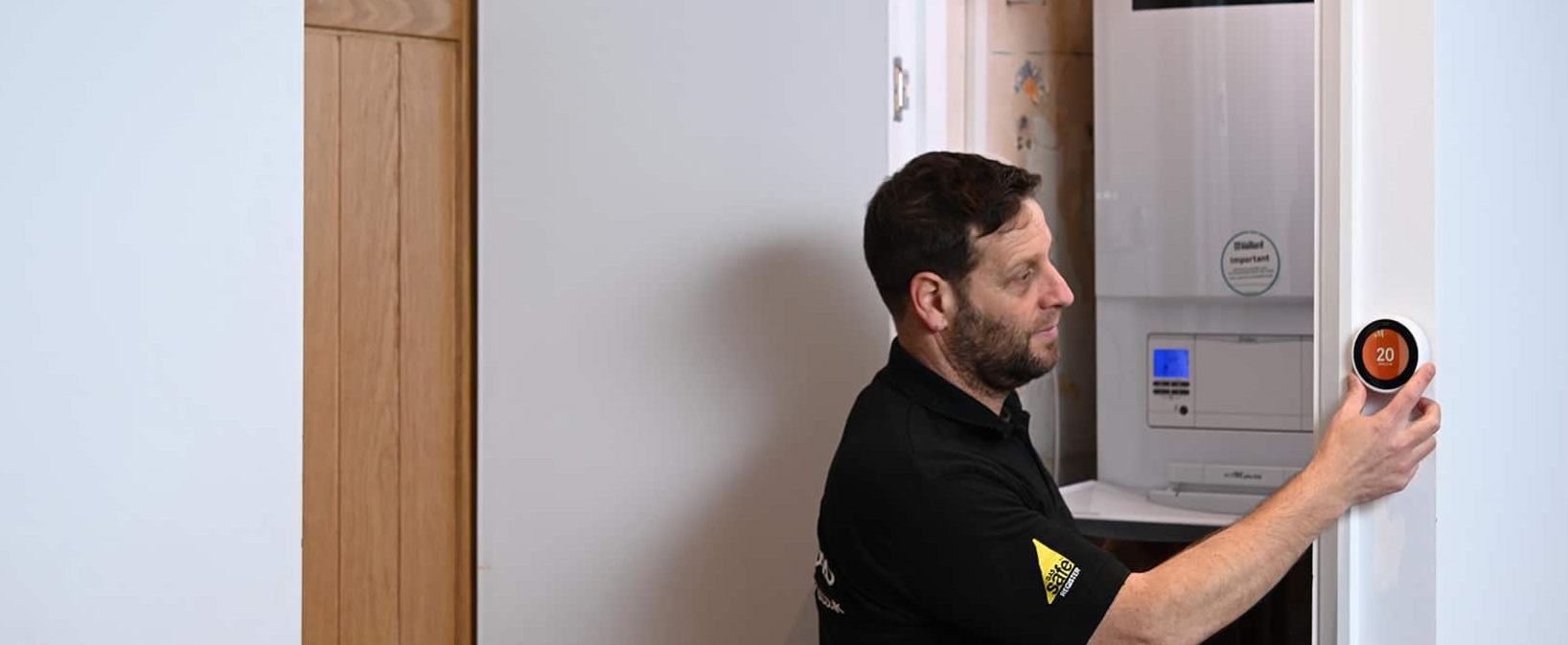 Sustainable Plumbing & Heating Systems for New Build Homes
Sustainable Plumbing & Heating Systems for New Build Homes

Here’s the scoop on green plumbing and heating systems in new builds: they’re not just a trend, they’re the future.
It’s not just a trend – it’s a necessity. With the world facing climate change and resources becoming scarce, we need to rethink how we build our homes.
Here’s the scoop: A bounty of smart, sustainable home innovations are ripe for the picking, letting you go green while keeping your space comfy and chic.
The Evolution of Heating Systems in UK New Builds
The UK is on a mission to tackle two big issues at once: the growing demand for housing and the need for sustainability. How? By setting a target to build 300,000 new homes every year – homes that are designed to be energy-efficient and easy on the environment. It’s a win-win situation: more people get to have a place to call home, and the planet gets a little bit of love too. With careful planning and smart design, these new homes can be the blueprint for a brighter, greener future.
Want a home that’s built to last? Look no further than your plumbing and heating systems. These efficient workhorses help slash energy consumption and water waste, all while keeping you cozy and content.
The changes to Part L of the Building Regulations, which came into effect in 2023, outline the specific requirements of plumbing and heating systems in new build properties. At the heart of these changes, gas boilers in new builds must deliver a 92% efficiency, while central heating systems should be sized for operation at a maximum of 55°C.
New home construction requirements open the door to plumbing and heating technologies that put sustainability first.
Transitioning from Gas Boilers to Low-Emission Alternatives
With around 30 million homes in the UK, it’s not surprising that heating them makes a significant contribution to overall emissions – around 17% in total. By rethinking how new homes are heated, efficiency, and sustainability can be directly improved.
From 2025, in accordance with the government’s Future Homes Standard, gas boilers will no longer be installed in new build homes, reducing reliance on gas. Instead, low emission alternatives like heat pumps will be used. For new build properties, adopting these emerging technologies is relatively straightforward as the buildings themselves can be designed to accommodate them.
Adapting Central Heating for Sustainability
As a result, new homes can now incorporate innovative features, such as the luxurious warmth and even heat distribution provided by underfloor heating (UFH).
Including UFH in the specification of new homes means that effective systems can form an integral part of the building from the outset. The low operating temperatures of these systems – typically between 40°C and 50°C – means they align directly with the requirements of today’s Building Regulations, placing sustainability at the heart of design.
Elevated operating temperatures lead to increased efficiency and empower home builders to construct residences that align with the needs of modern families.
Integrating Underfloor Heating in Modern Homes
When we think of traditional home heating, radiators will probably spring to mind as a solution that has been relied on for many decades. The problem with radiators is that they are energy hungry, requiring operating temperatures in excess of 65°C to adequately heat a room. Even then, cold spots are commonplace, compromising both efficiency and comfort.
Comparing UFH with Traditional Radiators
Say goodbye to cold feet and hello to toasty toes. UFH transforms your entire floor into a giant heater, giving you unbeatable comfort, impressive efficiency, and even a sleek look that’ll make your home the envy of the block.
Imagine a world where your heating system is out of sight and out of mind. That’s the beauty of underfloor heating like JG LowFit. It’s there when you need it, but it never cramps your style. And with smart tech in the mix, you’re in the driver’s seat when it comes to keeping your home cozy and eco-friendly.
Embracing Heat Pumps for Future-Proof Homes
Want to keep your home warm while reducing your carbon footprint? Heat pumps are the answer. These innovative systems extract heat from the air or ground outside and transfer it inside, providing an environmentally friendly alternative to traditional heating methods. Embrace the low-carbon future with a heat pump at the core of your home’s comfort.
Air Source vs. Ground Source Heat Pumps
There are two main types of heat pumps: air source and ground source. Air source heat pumps are the most popular choice for new build homes, as they are easier and less expensive to install than ground source heat pumps.
Air source heat pumps work by absorbing heat from the outside air and transferring it into the home, even in temperatures as low as -15°C. They are highly efficient, with some models achieving a Coefficient of Performance (COP) of over 4, meaning that for every unit of electricity used, they generate 4 units of heat.
Ground source heat pumps, on the other hand, extract heat from the ground using buried pipes. While they are more efficient than air source heat pumps, they require a significant amount of outdoor space for the ground loops, making them less suitable for smaller new build properties.
The Role of Plumbing in Sustainable Home Design
Alongside the systems that can facilitate efficiency, specifiers also need to consider the materials used to make plumbing and heating systems truly sustainable. When building sustainability into new homes, the materials used will have a direct impact – not just during construction, but also throughout its decades in use. Selecting materials that can stand the test of time is crucial to long-term efficiency and reliability.
Upgrading Mains Pressure Systems for Efficiency
If you’re looking to make a real impact on your home’s performance, start with your mains pressure hot/cold water systems. While copper pipes have been the go-to for generations, they’re not immune to the ravages of time. Corrosion and leaks can develop gradually, leaving you with a less-than-ideal water situation. The solution? Upgrade your materials and enjoy the peace of mind that comes with a top-notch water system.
Say goodbye to rusty, leaky pipes. Switching to PEX plastic for your hot/cold water systems means a plumbing setup that’s built to last. These flexible, corrosion-resistant materials are a breeze to install and go easy on the environment too – it takes less energy to make and move them compared to old-school copper.
Smart Technologies Enhancing Home Heating Efficiency
In addition to the physical systems and materials used in new build homes, smart technology is playing an increasingly important role in enhancing heating efficiency. By integrating smart controls and thermostats into heating systems, homeowners can optimise their energy use and reduce waste.
The Impact of Smart Controls on Energy Consumption
Picture this: you’re in complete control of your home’s temperature, thanks to smart controls. No more heating empty rooms or wasting energy during the hours when everyone’s asleep. Instead, you can create a custom heating schedule that fits your lifestyle like a glove. The outcome is a perfect balance of comfort and energy efficiency, with more money in your pocket at the end of the month.
Innovative smart systems learn from your daily habits, tweaking settings on the fly to keep your home running at peak efficiency. They’ll even show you where you can save more energy, putting you in control of your utility bills.
Innovations in Plumbing Materials for New Builds
Plastic pipes for mains pressure systems are just the beginning – the world of plumbing materials is rapidly evolving to keep up with the demands of eco-friendly new build homes. From waste pipes to underfloor heating, plastic solutions are becoming the go-to choice for a wide range of applications.
JG Speedfit’s Role in Modern Plumbing Solutions
One company at the forefront of this shift is JG Speedfit, whose plastic plumbing components are designed to make installation quicker, easier, and more reliable. Their push-fit fittings, for example, can be used to create leak-free joints without the need for tools or solder, saving time on site and reducing the risk of errors.
JG Speedfit’s products also offer excellent durability and longevity, with a 50-year guarantee on many of their pipes and fittings. By specifying these materials in new build homes, developers can create plumbing systems that will stand the test of time, reducing maintenance costs and environmental impact over the lifetime of the property.
Meeting Building Regulations with Advanced Heating Technologies
Of course, any new heating technologies specified in new build homes must meet the relevant building regulations and standards. This can be a complex area to navigate, with different rules applying to different types of systems and fuel sources.
The Importance of MCS Registration for Installers
If you’re an installer working with heat pumps or other renewable energy systems, being MCS registered is a must. The Microgeneration Certification Scheme (MCS) is all about quality – it’s a stamp of approval for both products and installers in the green energy world.
Developers, listen up. If you want your heat pump system to be the best it can be, choose an MCS-registered installer. They’ll make sure everything is designed, installed, and commissioned to meet building regulations and efficiency standards. This means you can relax knowing your system is in good hands, and you might even be able to get some government incentives and funding for your renewable heating project.
Preparing Homes for a Low-Carbon Future
As the UK charges ahead to slash carbon emissions to zero by 2050, the blueprint for new homes is being reimagined. Savvy developers are turning to eco-friendly heat pumps and toasty underfloor heating, paired with tough, high-performance plumbing. The result? Future-proof plumbing that can weather any storm.
But preparing homes for a low-carbon future is not just about the physical systems and materials used. It also requires a shift in mindset, with developers, installers, and homeowners all working together to prioritise sustainability and efficiency at every stage of the building process.
By taking a holistic approach to sustainable home design, we can create new build properties that not only meet the needs of today’s occupants but also contribute to a greener, more resilient future for generations to come. And with the right heating and plumbing solutions in place, we can ensure that these homes remain comfortable, efficient, and sustainable for many years to come.
Key Takeaway:
Embrace sustainable heating like heat pumps and underfloor heating in new builds to meet UK’s net-zero targets. Durable, efficient plumbing materials further ensure homes are future-proof, comfortable, and eco-friendly.
Conclusion
Sustainable plumbing and heating systems for new build properties are the future. By investing in these technologies, you’re not just saving money on your energy bills – you’re also doing your part to protect the planet.
Ready to shrink your carbon footprint and save some cash? Heat pumps, low-flow fixtures, and other eco-friendly home upgrades are calling your name! Plus, with government incentives and rebates on the table, there’s no better time to take the plunge.
Why put off creating a greener home? Dive in and uncover sustainable options that benefit both your family and the environment. Your budget will love the savings, and the planet will love you back!



